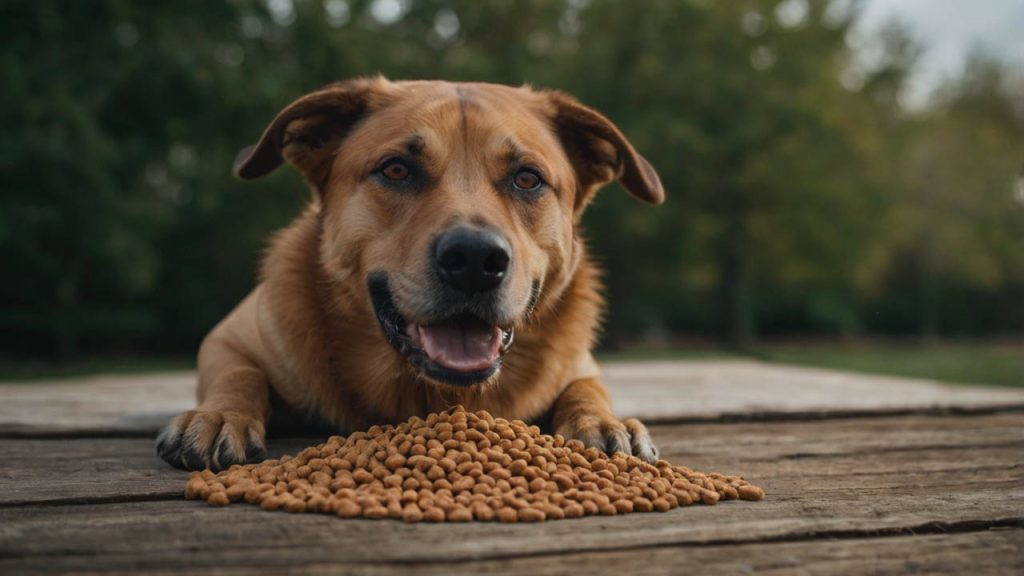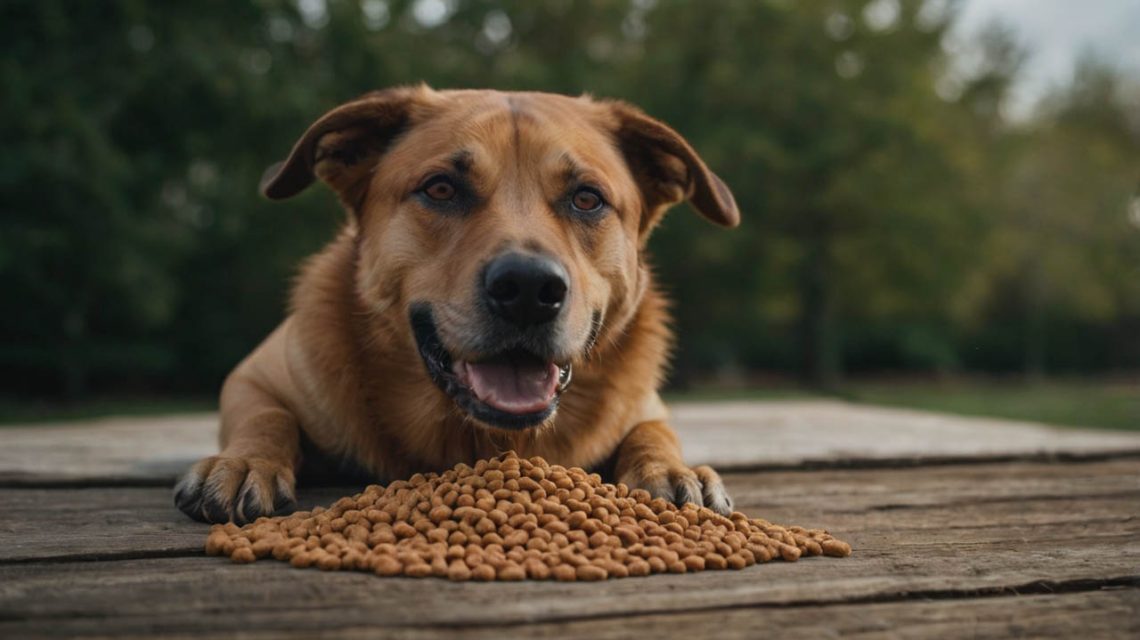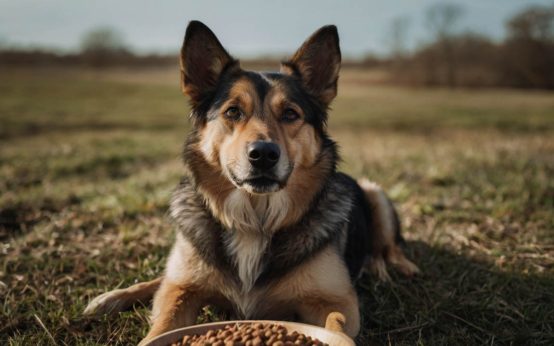Introduction: The Ultimate Guide to Soothing Your Dog’s Itchy Skin
The incessant scratching, the red and irritated skin, the chronic ear infections—these are the tell-tale signs of a dog suffering from skin allergies. As a devoted owner, watching your companion in constant discomfort is heartbreaking. You’ve likely tried countless topical treatments, but the root of the problem often lies in their food bowl. This realization leads to a critical and often overwhelming question: what is the best dog food for skin allergies? The answer isn’t a single magic brand, but rather a strategic nutritional approach designed to calm their reactive system from the inside out.
This comprehensive guide will provide a complete storyline for navigating this complex issue. We will deconstruct the link between food and skin health, explore the different categories of effective diets, and empower you to choose the right path for your pet. Consequently, by partnering with your veterinarian and understanding these food strategies, you can finally provide your dog with the lasting relief they deserve.
The First Step: Why You Must Partner with Your Veterinarian
Before you change a single kibble, your first and most crucial action is to schedule an appointment with your veterinarian. Self-diagnosing your dog’s skin issues is a common mistake that can lead to months of frustration and unnecessary expense. Skin allergies in dogs are complex, and the symptoms of a food allergy can perfectly mimic other conditions.

Ruling Out Other Causes of Itchy Skin
Your veterinarian is the only one who can perform a thorough examination to rule out other common culprits, such as:
- Flea Allergy Dermatitis (FAD): An intense allergic reaction to flea saliva, which is the single most common cause of skin allergies in dogs.
- Environmental Allergies (Atopy): Reactions to inhaled allergens like pollen, mold, and dust mites.
- Secondary Infections: Chronic scratching often leads to bacterial or yeast infections that cause severe itching on their own.
Only after ruling out these other possibilities can your vet confidently suspect a food-related issue and guide you toward the best dog food for skin allergies.
Understanding the Link: How Food Causes Skin Allergies
A true food allergy is an immune system overreaction to a specific protein in your dog’s food. The body mistakenly identifies a common protein—like beef or chicken—as a threat and launches an inflammatory response. This internal inflammation is what manifests externally as itchy, irritated skin.
According to a landmark study in BMC Veterinary Research, the most common food allergens for dogs are the proteins they have been most frequently exposed to over time, including:
- Beef
- Dairy
- Chicken
- Wheat
- Lamb
This is why simply switching from one over-the-counter food to another often fails. You may be inadvertently swapping one common allergen for another. The best dog food for skin allergies is one that strategically avoids your dog’s specific triggers.
The Gold Standard: Finding the Best Dog Food for Skin Allergies with an Elimination Diet
The only way to definitively diagnose a food allergy and identify the trigger is through a strict elimination diet, supervised by your veterinarian. This involves feeding your dog a special therapeutic diet for 8-12 weeks to see if their skin symptoms resolve. The three main categories of foods used for this are Hydrolyzed Protein, Novel Protein, and Limited Ingredient Diets.
Hydrolyzed Protein Diets: The Ultimate Solution
For the most severe and complex cases, veterinary hydrolyzed protein diets are often considered the best dog food for skin allergies.
- How They Work: In these prescription diets (like Purina HA or Royal Canin Ultamino), the protein molecules are broken down through hydrolysis into fragments so small that the dog’s immune system can no longer recognize them as an allergen. It’s like making the protein invisible to the immune system.
- Why They’re Effective: Because the immune system isn’t triggered, the allergic reaction that causes skin inflammation never starts. This makes them the perfect tool for a diagnostic food trial and for long-term management of dogs with multiple food allergies.
- Who They’re For: Dogs with severe, non-seasonal itching who have not responded to other dietary changes. This is a prescription-only option.

Novel Protein Diets: A New Approach for the Immune System
A “novel” protein is simply one your dog has never been exposed to before.
- How They Work: A food allergy develops from repeated exposure. Since your dog’s immune system has never encountered a protein like venison, kangaroo, duck, or alligator, it’s highly unlikely to have an allergic reaction to it.
- Why They’re Effective: By pairing a single novel protein with a single novel carbohydrate (like venison and sweet potato), you create a simple diet that is free of your dog’s previous triggers.
- Who They’re For: A great choice for an elimination trial or for dogs with a known allergy to a common protein like chicken. Many high-quality, over-the-counter novel protein diets are available.
Limited Ingredient Diets (LID): The Power of Simplicity
Limited Ingredient Diets are designed to minimize the number of potential allergens in each bowl.
- How They Work: LIDs typically contain just one animal protein source (like salmon) and one or two carbohydrate sources (like peas and potatoes). By simplifying the formula, the chance of including an ingredient your dog is allergic to is significantly reduced.
- Why They’re Effective: They make it much easier to pinpoint what your dog can and cannot tolerate. Many owners find that a high-quality LID is the best dog food for skin allergies once they have identified their dog’s trigger ingredient.
Key Ingredients in the Best Dog Food for Skin Allergies
When you’re reading labels, certain ingredients signal that a food is designed to support skin health.
The Importance of Omega Fatty Acids
Omega-3 and Omega-6 fatty acids are absolutely crucial.
- Omega-3s (from sources like fish oil, salmon, and flaxseed): These are powerful anti-inflammatories. They help to naturally reduce the inflammation in the skin, which in turn reduces itching and redness.
- Omega-6s (from sources like sunflower oil): These are vital for maintaining the skin barrier. A strong, healthy skin barrier is more resilient to environmental allergens and secondary infections.
A proper balance of these fatty acids is a hallmark of the best dog food for skin allergies.
Antioxidants and Skin-Supporting Nutrients
Look for foods rich in antioxidants like Vitamin E and other nutrients like zinc and biotin. These ingredients help protect skin cells from damage and support the growth of a healthy, lustrous coat.
How to Successfully Transition to a New Food
Once you and your vet have chosen the best dog food for skin allergies to try, a slow transition is vital to avoid causing digestive upset.
Follow this 7-10 day schedule:
- Days 1-3: 75% old food mixed with 25% new food.
- Days 4-6: 50% old food mixed with 50% new food.
- Days 7-9: 25% old food mixed with 75% new food.
- Day 10: 100% new food.
During an elimination trial, it is absolutely critical that your dog eats nothing but the new food. No treats, no table scraps, no flavored supplements, unless they are made from the same limited ingredients. A single bite of the wrong food can restart the allergic reaction.
Conclusion: A Strategic Path to an Itch-Free Life
Finding the best dog food for skin allergies is a journey, not a quick fix. It is a strategic process that begins with a crucial partnership with your veterinarian to get an accurate diagnosis. From there, the path involves choosing a specialized diet—whether it’s a powerful hydrolyzed protein formula, an innovative novel protein diet, or a simplified limited ingredient option—that is rich in skin-supporting nutrients like omega fatty acids.
By committing to a strict food trial and patiently observing the results, you can finally identify your dog’s triggers and provide them with the nutritional foundation for a healthy, comfortable, and itch-free life. The relief you see in their eyes and the peace in your home will be the ultimate reward.
Is your dog struggling with itchy skin? Don’t wait. Schedule an appointment with your veterinarian to discuss if a dietary change is the right next step. Have you found a food that has transformed your dog’s skin health? Share your success story in the comments below!



 Best Dog Food for Skin Allergies: Expert Guide
Best Dog Food for Skin Allergies: Expert Guide